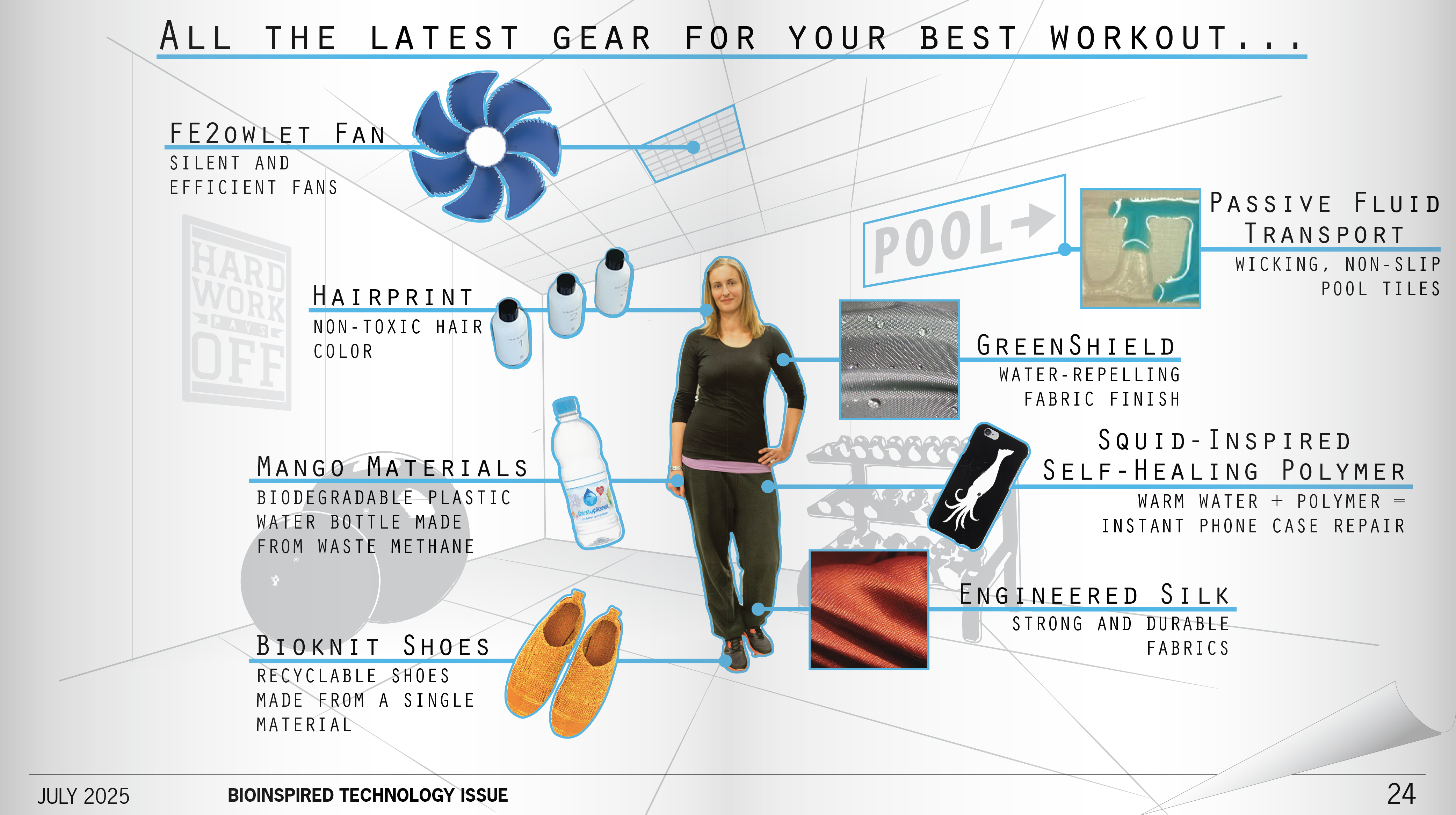
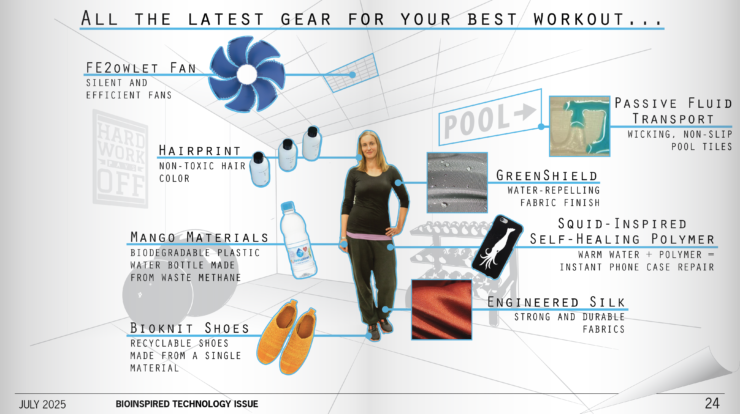
Features
Visions from the (Bioinspired) Future
Terrapin Bright Green
Share
Learn more about our bioinspired innovation work and services by emailing us at [email protected] and reading our report, Tapping into Nature. Follow the conversation on twitter: @TerrapinBG | #TapNature.
By Eleanor Sadik-Khan
Editor’s Note: We’ve updated the market readiness chart in Tapping into Nature, Terrapin’s white paper on biologically-inspired innovation! Click to view the new technologies and progress made by the companies behind the innovations.
What if I told you in 35 years your hopelessly cracked cell phone case or those designer sunglasses that just snapped could be fixed with only a few drops of warm water? Would you believe me? Maybe you should. A recently developed polymer technology—inspired by the self-healing properties of amorphous proteins in squid teeth—can repair damage using warm water and slight pressure. This biologically-inspired technology, along with hundreds of others, is contributing to the rapid evolution of consumer and industrial products. Nature is home to incredibly efficient and effective processes, and bioinspired innovation draws on these biological strategies (which have developed over billions of years) to create sustainable technology. As research on biological processes continues, new technologies are debuting on the market, addressing environmental and industrial challenges, while also reducing costs, increasing efficiency, and encouraging a more sustainable society.
As our consumer products begin to be made more often using design principles seen in nature, we’ll begin to enjoy exciting new products. Nontoxic hair coloring, self-healing materials, and devices that use low energy will be commonplace. Eventually they’ll be so mainstream they will be featured all over magazine profiles! Let’s imagine what a magazine profile in 2025 would look like. The following is a sketch of the potential future of bioinspired materials in your everyday (workout) routine!
 Hairprint: Tired of worrying about toxic chemicals in hair dye? So are we. Fret no more. This hair treatment, currently designed for brown or black hair, restores gray hair to its former color. The technology mimics the hair pigmentation process and uses the same chemistry as your natural pigment. Workout with gray hair no more! (Editor’s Note: This product is actually available now!)
Hairprint: Tired of worrying about toxic chemicals in hair dye? So are we. Fret no more. This hair treatment, currently designed for brown or black hair, restores gray hair to its former color. The technology mimics the hair pigmentation process and uses the same chemistry as your natural pigment. Workout with gray hair no more! (Editor’s Note: This product is actually available now!)
 Engineered Silk: Inspired by spider silk, Bolt Threads spins yeast-produced proteins into silk. These fibers–made from water, sugar, and salts–provide garments and fabrics with greater durability and strength. Your clothes can finally keep up with you through all those Tough Mudder obstacles.
Engineered Silk: Inspired by spider silk, Bolt Threads spins yeast-produced proteins into silk. These fibers–made from water, sugar, and salts–provide garments and fabrics with greater durability and strength. Your clothes can finally keep up with you through all those Tough Mudder obstacles.
 Passive Fluid Transport: Heading to the pool for some laps? Don’t worry about those pools of water on slippery tiles on the pool deck. This passive fluid transport system, inspired by the skin of the Texas horned lizard, redirects water through a system of interconnecting capillaries to dissipate dangerous puddles. Plus, less maintenance required for your facility manager.
Passive Fluid Transport: Heading to the pool for some laps? Don’t worry about those pools of water on slippery tiles on the pool deck. This passive fluid transport system, inspired by the skin of the Texas horned lizard, redirects water through a system of interconnecting capillaries to dissipate dangerous puddles. Plus, less maintenance required for your facility manager.
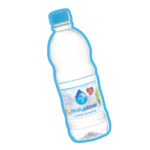 Mango Materials: If you STILL insist on using plastic water bottles, indulge your fetish — guilt free! This bottle is biodegradable and is actually created from waste methane. Even as the plastic breaks down, it produces methane which can then be recycled for the process to begin again, promoting a circular economy!
Mango Materials: If you STILL insist on using plastic water bottles, indulge your fetish — guilt free! This bottle is biodegradable and is actually created from waste methane. Even as the plastic breaks down, it produces methane which can then be recycled for the process to begin again, promoting a circular economy!
 FE2owlet Fan: Cooling systems at the gym are a necessity. Let’s face it, you’re hot. See that vent in the back? A direct visual connection will be the only reminder it’s there. Inspired by the silent air movement over barn owl wings, this fan improves the efficiency ventilators by 15% while also reducing noise levels, so you’ll only hear your favorite workout playlist.
FE2owlet Fan: Cooling systems at the gym are a necessity. Let’s face it, you’re hot. See that vent in the back? A direct visual connection will be the only reminder it’s there. Inspired by the silent air movement over barn owl wings, this fan improves the efficiency ventilators by 15% while also reducing noise levels, so you’ll only hear your favorite workout playlist.
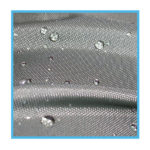 GreenShield: Let’s face it. You sweat. We sweat. Everybody sweats. But GreenShield is here to help protect your clothing, regardless. This nanoparticle-based textile finish, inspired by plant leaves, allows water droplets to roll off fabric, carrying along dirt and other particles to create a self-cleaning effect.
GreenShield: Let’s face it. You sweat. We sweat. Everybody sweats. But GreenShield is here to help protect your clothing, regardless. This nanoparticle-based textile finish, inspired by plant leaves, allows water droplets to roll off fabric, carrying along dirt and other particles to create a self-cleaning effect.
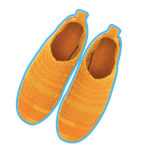 BioKnit Shoes: Similar to the strategy seen in many organisms where a limited number of substances are specifically used to produce materials with diverse mechanical properties, this shoe’s manufacturing process uses a single material to create a shoe that features varying levels of softness, strength, and flexibility And it’s recyclable! You avid runners no longer need to hold onto sneakers for way too many miles — buy a new pair and recycle your worn ones!
BioKnit Shoes: Similar to the strategy seen in many organisms where a limited number of substances are specifically used to produce materials with diverse mechanical properties, this shoe’s manufacturing process uses a single material to create a shoe that features varying levels of softness, strength, and flexibility And it’s recyclable! You avid runners no longer need to hold onto sneakers for way too many miles — buy a new pair and recycle your worn ones!
 Squid-Inspired Self-Healing Polymer: Did you fall off the treadmill again? (It happens to the best of us.) Did you crack your phone case? No worries! This squid-inspired self-healing polymer can repair your phone case with a little warm water and slight pressure. (Note: polymer cannot salvage your dignity).
Squid-Inspired Self-Healing Polymer: Did you fall off the treadmill again? (It happens to the best of us.) Did you crack your phone case? No worries! This squid-inspired self-healing polymer can repair your phone case with a little warm water and slight pressure. (Note: polymer cannot salvage your dignity).
While these technologies may make an appearance at your workout highs (and lows), their potential value is far-reaching. With applications in agriculture, chemical manufacturing, healthcare, and power generation, distribution, and storage, the future of bioinspired innovation could transform the global economy and address many environmental issues. To learn more about bioinspired innovation or the current market stage of these biologically-inspired technologies, check out the updated infographic of over 100 bioinspired technologies in our Tapping Into Nature report or contact Terrapin.
For more information on these technologies, check out these links:
- Hairprint
- Engineered Silk
- Passive Fluid Transport
- Mango Materials
- FE2owlet Fan
- GreenShield
- BioKnit Shoes
- Squid-Inspired Self-Healing Polymer
Image credits: Technology images courtesy of FE2owlet fan, Hairprint, BioKnit Shoes, and Commans et al/Royal Society Interface. Background images copyright Brett Taylor/Flickr, Sherrie Thai/Flickr, Udo Geisler/Flickr, and PUMP AID/Flickr.
 Eleanor Sadik-Khan is a freshman at Washington University in St. Louis interested in the psychological benefits of human interactions in the natural environment. Having done previous research examining the impact of natural vs. urban settings on memory and mood, Eleanor hopes to further explore how biophilia and biophilic design can improve human health and wellbeing. At Terrapin, Eleanor will support various efforts in the office such as researching bioinspired technologies and exploring Phoebe case studies.
Eleanor Sadik-Khan is a freshman at Washington University in St. Louis interested in the psychological benefits of human interactions in the natural environment. Having done previous research examining the impact of natural vs. urban settings on memory and mood, Eleanor hopes to further explore how biophilia and biophilic design can improve human health and wellbeing. At Terrapin, Eleanor will support various efforts in the office such as researching bioinspired technologies and exploring Phoebe case studies.
Topics
- Environmental Values
- Speaking
- LEED
- Terrapin Team
- Phoebe
- Community Development
- Greenbuild
- Technology
- Biophilic Design Interactive
- Catie Ryan
- Spanish
- Hebrew
- French
- Portuguese
- Publications
- Occupant Comfort
- Materials Science
- Conference
- Psychoacoustics
- Education
- Workshop
- Mass Timber
- Transit
- Carbon Strategy
- connection with natural materials
- interior design
- inspirational hero
- biophilia
- economics of biophilia
- Sustainability
- wood
- case studies
- Systems Integration
- Biophilic Design
- Commercial
- Net Zero
- Resorts & Hospitality
- Energy Utilization
- Water Management
- Corporations and Institutions
- Institutional
- Ecosystem Science
- Green Guidelines
- Profitability
- Climate Resiliency
- Health & Wellbeing
- Indoor Environmental Quality
- Building Performance
- Bioinspired Innovation
- Biodiversity
- Residential
- Master Planning
- Architects and Designers
- Developers and Building Owners
- Governments and NGOs
- Urban Design
- Product Development
- Original Research
- Manufacturing
- Industrial Ecology
- Resource Management
- Sustainability Plans
- Health Care
- Carbon Neutrality

